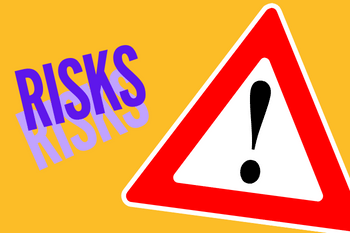If you're peeking into the world of alternative investments, you might have stumbled upon peer-to-peer (P2P) lending. It's a concept that's reshaping how people think about lending and borrowing. In its simplest form, P2P lending is a way for individuals to lend money to other individuals or businesses through an online platform that matches lenders with borrowers.
The idea is bypassing traditional financial institutions like banks, making the process leaner and often more beneficial for both parties involved.
Today, I'm going to break down how P2P lending works. You're going to find out about
- How these platforms serve as intermediaries,
- The necessary tools, services, and
- Security measures for transactions between strangers.
So the point is this. Through these platforms, lenders can earn higher interest rates compared to savings accounts or other low-risk investments, while borrowers can access funds at interest rates that may be lower than what traditional banks offer.

But this rise in P2P lending's popularity isn't just a trend — it's a response to the demand for more efficient financial services. With financial technology advancing, the convenience and accessibility of P2P lending platforms have caught the attention of both borrowers and investors looking for better ways to manage money and achieve financial goals.
This is all part of a greater shift towards financial democratization, where technology is being leveraged to create opportunities and empower individuals financially.
The Fundamentals of Investing in P2P Lending
You're going to find out about how you can step into the world of peer-to-peer lending as an investor. It's not just about lending money; it's also about understanding where your money goes and how you earn from it.
The basic premise is quite straightforward:
You put your money into loans that are requested by other people or businesses through a P2P platform.
That platform acts as an intermediary, but the most important point is that you, as the investor, get to choose which loans you want to finance based on risk, interest rate, and loan duration.
Did You Know?
- The global P2P lending market size was estimated at USD 5.07 billion in 2022.
- It is expected to grow at a CAGR of 20.2% from 2023 to 2030.
- The P2P lending market size in 2021 was USD 82.3 billion.
- It is set to reach USD 804.2 billion by 2030.
- The market exhibited a CAGR of 29.1% from 2021.
When we talk about the returns, they're often articulated as interest rates. Typically, these can be higher than what a traditional savings account or even bonds would offer. But there's more volatility here; while you might see advertised rates of return that are pretty attractive, remember that they come with a higher risk.
Which brings us to risk assessment. Every loan you invest in could default.
That means the borrower fails to repay, and you could lose your principal investment. The stability of the platform itself matters as well—platforms have been known to collapse, taking investor money with them. And this is where spreading your investments across different loans, a strategy known as diversification, becomes crucial to mitigate losses.
Now, if you've followed me up to this point and are thinking of dipping your toes into the P2P pool, it's important to set realistic expectations about returns and understand clearly the part you play as an investor in these transactions. And as a word of caution, don't rush in. Take your time to research and start small.
Success Example: Earning Through P2P Lending

You might be curious about who's actually making money with P2P lending, and I'm here to tell you that, yes, there are individuals who have found success. These success stories give you a glimpse into what's possible when you take a calculated approach to this investment strategy.
Let's look at how Joe, a school teacher, turned P2P lending into a profitable side income. He invested a moderate sum across hundreds of loans with varying levels of risk and was able to earn a healthy return that outpaced his savings account interest. Having a diversified portfolio helped Joe absorb defaults without significant impact on his overall returns.
Example:
You an IT professional, share your experience into P2P lending, starting with a small investment. Over time, as you become more comfortable and understand the risks, you gradually increas your stake. By reinvesting your earnings and carefully selecting your loans, you will optimize your returns while maintaining a manageable risk level.
Consistently, successful investors highlight the importance of diversification, thorough research, and understanding personal risk tolerance. Adopting the strategies is not as difficult as you think - you just need some basic to maximize your profit such as;
- Setting realistic expectations,
- Selecting loans after careful consideration, and
- Diversifying.
These anecdotes demonstrate that P2P lending can indeed be a supplemental income source if approached with patience and strategy.
But don't let these success stories of P2P lending overshadow the risks involved. That's going to include the possibility of borrower default, platform stability concerns, and liquidity issues.
Did You Know?
- As of 2022, the P2P lending market was valued at USD 407.2 billion, up from USD 274.4 billion in 2021.
- In 2022, the market was valued at $153 billion and is projected to reach $1.7 trillion by 2032.
- The market grew from $107.84 billion in 2022 to $143.64 billion in 2023.
- Consumer lending accounted for 80% of the total P2P lending market size.
- North America and Europe have the largest P2P lending market share.
P2P Lending Risks: Managing Your Money Wisely

Investing in P2P lending can feel like striking gold if you've heard the success stories, but it's crucial to understand the risks involved. It's not all sunshine and high returns; there are clouds that can darken your investment outcomes.
Let's get real about the potential financial pitfalls you might face.
First off, borrower default is a stark reality. Unlike traditional banks, P2P platforms don't have the same recovery resources if a borrower doesn't pay up. That's a direct hit to your pocket.
Think about platform stability, too. What happens if the platform managing your investment goes belly up? It's rare, but it has happened, and it can leave investors in the lurch.
You might be wondering, 'How do I sidestep these potholes?' It's about being smart with your risk management. Diversify your loans, so you're not putting all your money in one investment. You'll be fine if you always, always do your homework before investing. Scrutinize borrower profiles, and don't shy away from asking tough questions about the platform's stability and track record.
On the flip side, don't let fear of risks paralyze you. By understanding and managing them, you can confidently invest in P2P lending. Be proactive, not reactive - establish a risk threshold that suits your investment style and stick to it. This means setting aside a portion of your portfolio for P2P investments that aligns with your risk tolerance.
In the next section, I'm going to shed light on a crucial aspect that directly impacts your investing experience and returns - compliance and regulations. Managing the legal jungle is as important as picking the right loans. After all, the most profitable investments are the ones that are not only savvy but also secure.
Did You Know?
- The Asia-Pacific region is noted as the fastest-growing market for P2P lending.
- In China, platforms like Lufax offer 6%-8% interest, compared to 1.75% offered by the Bank of China.
- The market size reached US$ 147.9 billion in 2022 and is expected to reach US$ 626.5 billion by 2028.
- Business lending holds the majority of the global P2P lending market share.
- Traditional lending dominates the market, helping borrowers avail quick and convenient loans.
Compliance and Regulations: The Legal Landscape
When you're thinking about making money from peer-to-peer lending, the regulations in this space just cannot be underestimated. Regulatory frameworks are in place to protect both borrowers and lenders, and staying compliant is not just a legal requirement, it's a safeguard for your investment.
Globally, P2P platforms are subject to diverse regulatory standards. In some areas, they fall under the same regulations as banks and credit unions, while in others, they may be seen under a different set of rules tailored to fintech operations. Knowing what guidelines your platform of choice adheres to can give you a good indication of its seriousness and reliability.

For you as an investor, compliance affects your earnings since compliant platforms may have to set aside capital against loans, impacting the returns. On top of that, they may charge fees for their services, which can eat into what you pocket at the end of the day.
But here's the clincher: regulatory frameworks are continually evolving. As P2P lending grows, so does regulatory interest. This means the landscape can change, and what is permissible today may be restricted tomorrow, affecting how platforms operate and, in turn, your potential returns.
So my advice? Go with platforms that put a strong emphasis on compliance. A serious approach to regulations is a signal of a platform's commitment to longevity and can be a beacon of trust in the murky waters of online investments.
Your P2P lending should not end here, though. In the next section, 'The Future of P2P Lending: Is It a Sustainable Money-Making Path?', we're going to look ahead.
What's in store for this innovative form of investment? Stick around to find out how you can continue to make informed choices in the evolving world of P2P lending.
The Future of P2P Lending: Is It a Sustainable Money-Making Path?
So, you're wondering whether peer-to-peer lending is just a fad or a reliable income source for the future. I'm here to help you unpack that. The world of P2P lending is dynamic, with technological advancements shaping the way investors and borrowers interact on these platforms.
In my opinion, the following 3 elements will impact the sustainability of P2P lending;
1. Robustness of the Platform's Infrastructure
This is about how strong and reliable the technical and operational aspects of a P2P lending platform are. A robust infrastructure means the platform can handle a large volume of transactions smoothly, has strong cybersecurity measures to protect against hacks and data breaches, and ensures uptime and accessibility.
It's also about having a good user interface and experience, making it easy for lenders and borrowers to interact with the platform. If the infrastructure is shaky or unreliable, it can lead to lost transactions, security issues, or a bad reputation, which can all hurt the platform's sustainability.
2. Improved Credit Analysis
This is all about how well a platform can assess the creditworthiness of borrowers. Improved credit analysis means using advanced algorithms, data analytics, and perhaps even AI to evaluate a borrower's likelihood of repaying a loan.
This is crucial because P2P lending often involves unsecured loans, which are riskier. The better a platform is at assessing this risk, the more trust lenders will have in it. It also helps in setting appropriate interest rates, reducing defaults, and ensuring a healthy balance between the interests of borrowers and lenders.
3. Adaptive Regulatory Measures
This point is about how well the P2P lending platform adapts to changing laws and regulations. Financial markets are heavily regulated, and these regulations can change frequently.
A platform that's quick to adapt to these changes can ensure compliance and avoid legal troubles. This also includes being transparent with both borrowers and lenders about how their money is being used, the risks involved, and the regulatory environment.
Good regulatory compliance not only helps in avoiding penalties but also builds trust with users and regulators, contributing to the long-term stability of the platform.
Moreover, as societal preferences shift towards more personalized and tech-driven financial services, P2P lending stands to gain more popularity.
Did You Know?
- Small businesses exhibit clear dominance in the market due to low-interest rates offered by P2P lending platforms.
- North America holds the majority of the market share due to the presence of big businesses and giant corporations.
- The small business segment is expected to lead the global market, exhibiting a CAGR of 10.3% from 2022 to 2032.
- The consumer credit segment is expected to grow at a healthy CAGR, offering various remunerative opportunities.
- North America is expected to dominate the global market, with the USA having the largest share during the forecast period.
Remember, with the integration of AI and machine learning for better loan underwriting and fraud detection, platforms are becoming more efficient and secure. This is attracting a broader investor base, looking for alternative investments that offer higher returns than traditional savings avenues.
Investor confidence is key, and as long as P2P platforms maintain transparency, implement robust security measures, and provide decent returns, they will continue to be attractive. That's a big selling point. Yet, stay cautious; no investment is without risk, and continuous market evaluation is crucial.
So here it goes - if you choose something that resonates with you and you're savvy about the risks, P2P lending could be a top-notch addition to your investment portfolio. It's not a guarantee, but there's a lot of opportunity in this market - provided you do your homework and commit to staying informed.
For years, I've had a passion for writing, sharing stories with the world. Parallel to that, I've spent a good part of my life in stock investing, learning the ropes and making wise decisions. Now, as I enjoy my semi-retired life, I find joy in blending these two worlds. By combining my financial experience with my writing skills, I aim to create content, hoping to inspire others.

